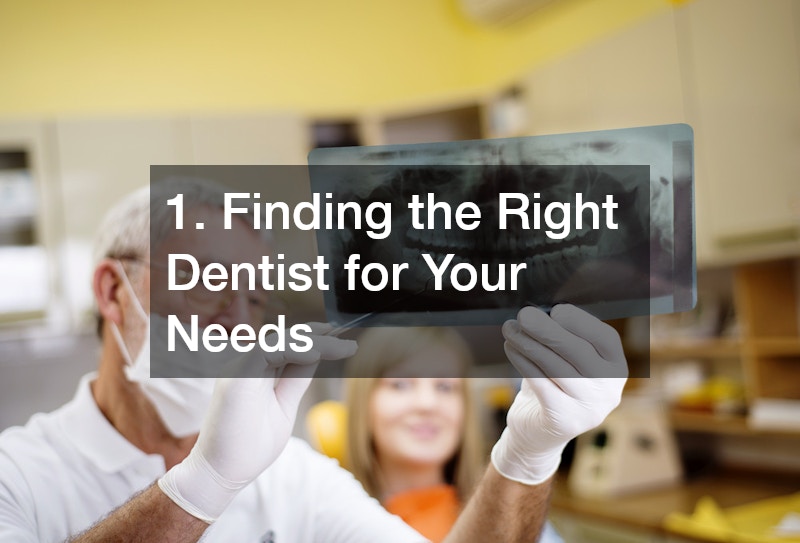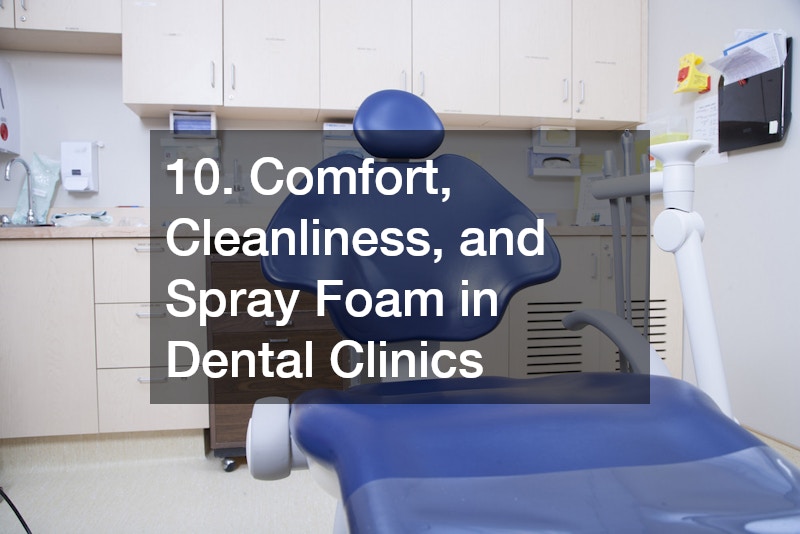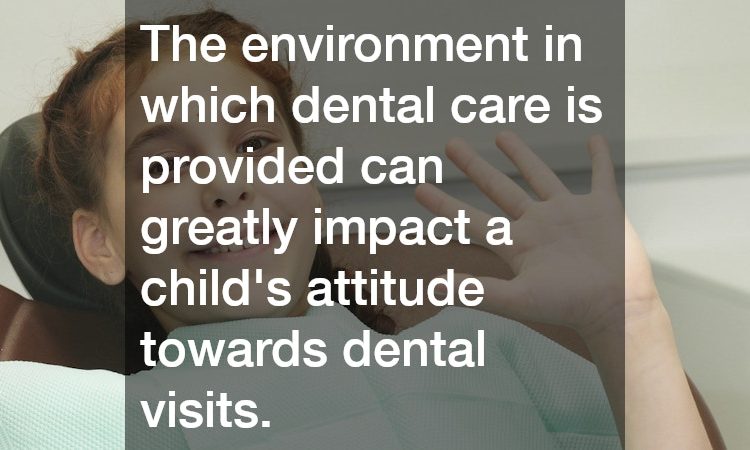Visiting the dentist is one of the most important parts of maintaining overall health and confidence. Oral care goes beyond clean teeth—it influences digestion, heart health, and even self-esteem. Modern dentistry provides patients with access to a range of services that focus on prevention, restoration, and cosmetic enhancement. Whether you’re visiting for a routine checkup, a filling, or advanced alignment treatment, understanding what to expect during dental visits helps reduce anxiety and improve results. Regular appointments allow professionals to identify potential issues early and provide personalized recommendations to protect your long-term oral health.
1. Finding the Right Dentist for Your Needs

Choosing the right local dentist is one of the most important steps in maintaining lifelong oral health. A local practice provides the convenience of proximity, making it easier to schedule regular checkups and respond quickly in case of an emergency. Beyond convenience, building a relationship with a dentist near you allows for more consistent care, as your records, preferences, and treatment history are all in one place. A trustworthy dentist can guide you through every stage of oral health—from preventive care to cosmetic improvements—offering personalized advice and tailored treatments to suit your specific needs.
When searching for a local dentist, look for credentials, technology, and approachability. Ask about office hours, sterilization practices, and how they manage dental anxiety. Visiting the office before booking a procedure can help you gauge cleanliness and professionalism. Many patients find it helpful to read reviews or request referrals from family and friends. A dentist who offers preventive, restorative, and emergency services under one roof saves time and builds a consistent care routine. Taking the time to choose the right practice ensures you have reliable oral care support for every stage of life.
2. What to Expect During a Visit to the Dentist
Understanding what happens during a dental appointment can make the process less intimidating. A typical visit begins with a review of your medical history and current symptoms, followed by a comprehensive cleaning and examination. During cleanings, professionals remove plaque and tartar that can’t be eliminated with regular brushing. They also check for cavities, gum inflammation, and signs of oral cancer. Dental X-rays may be taken to view areas not visible to the naked eye, helping the dentist identify issues early and recommend the right treatments. Preventive care like this plays a crucial role in avoiding costly or painful problems later.
A more specific visit might involve targeted treatments based on findings from your exam. For example, if your dentist detects enamel wear, they may recommend fluoride treatments or sealants. Patients with sensitivity could receive special gels or polishing pastes to protect their teeth. The dentist will discuss your oral hygiene habits and suggest adjustments to brushing or flossing techniques. Modern dental tools and lighting make the experience efficient and comfortable. By knowing what to expect, you can prepare for your visit with confidence, knowing that professional care supports a healthy, lasting smile.
3. Dental Care for Kids: The Role of the Pediatric Dentists
For children, dental care sets the foundation for lifelong oral health. Visiting a pediatric dentist ensures that young patients receive specialized care suited to their developmental needs. These professionals are trained to manage children’s behavior, ease dental anxiety, and monitor the growth of teeth and jaw structures. Pediatric dentistry focuses on prevention through regular cleanings, fluoride applications, and education on proper brushing techniques. Early visits teach children to view the dental office as a friendly environment, making future appointments less stressful and more productive. Parents play a vital role in reinforcing these habits at home.
When visiting a pediatric dentist, parents can expect a gentle, patient-centered approach. The office is usually designed to feel welcoming, often decorated with bright colors and engaging visuals. Pediatric dentists use child-sized instruments and explain each step in simple, comforting terms. They also keep an eye out for common childhood issues like thumb-sucking or early tooth decay. Preventive measures, such as sealants, protect developing teeth from cavities. Early intervention in orthodontic concerns can also begin here, as pediatric specialists track bite alignment and jaw growth to determine if future braces or corrective devices may be needed.
4. Enhancing Your Smile with Whitening

Cosmetic dentistry has become increasingly popular as more people seek ways to enhance their smiles. Teeth whitening is one of the most requested treatments because it provides noticeable results in a short amount of time. Over time, teeth naturally become discolored from foods, drinks, and lifestyle factors. Professional whitening treatments can safely and effectively lift stains, restoring brightness and confidence. Unlike over-the-counter products, professional whitening uses customized solutions that reduce sensitivity and achieve consistent results, all under the supervision of your dentist.
When opting for teeth whitening, your dentist will first examine your mouth to confirm that your teeth and gums are healthy enough for the procedure. A whitening gel is then applied to the teeth and activated using light or laser technology. The process typically takes about an hour, and results can last for several months with proper care. To maintain brightness, patients are advised to avoid staining agents such as coffee, red wine, and tobacco for at least two days post-treatment. At-home touch-up kits prescribed by the dentist can extend the results even further, ensuring your smile stays radiant.
5. How Dental Supplies Improve Patient Care
Behind every smooth dental visit lies the advanced technology and materials that professionals use daily. Dental supplies are essential to maintaining hygiene, precision, and comfort during procedures. From high-speed suction devices and sterilization tools to polishing pastes and filling materials, these products make modern dentistry safer and more efficient. Sterilized instruments and disposable items reduce the risk of infection, while ergonomic tools enhance precision and shorten treatment times. The variety of supplies available today allows dentists to provide customized care for every patient.
Specific dental supplies are chosen based on the treatment being performed. For example, fluoride varnish is applied after cleanings to strengthen enamel, while digital scanners replace messy traditional impressions for orthodontic or cosmetic work. Disposable gloves, bibs, and covers ensure a sterile environment for every patient. High-quality materials also improve the longevity of restorations like fillings and crowns. Patients may not always notice these details, but they play a crucial role in treatment outcomes and safety. Investing in advanced equipment helps dentists deliver reliable results and enhances the overall experience in the dental chair.
6. When to Seek Care for Dental Emergencies
Dental emergencies can happen unexpectedly and require immediate attention to prevent complications. Knowing when to seek urgent care can save a tooth or prevent severe pain from worsening. Common emergencies include knocked-out teeth, cracked crowns, severe toothaches, or infections causing swelling. Quick action ensures better outcomes—especially when a dentist can reinsert a dislodged tooth or treat an infection before it spreads. Having a trusted dental provider available during emergencies gives peace of mind, knowing that professional help is always within reach.
When visiting a clinic that offers urgent care, patients can expect rapid evaluation and stabilization. The dentist may prescribe pain medication or antibiotics, perform emergency procedures, or provide temporary restorations until full treatment can be completed. It’s wise to keep your dentist’s emergency number accessible and store basic first-aid items such as gauze and pain relievers at home. For families, finding a local practice that handles both general and emergency care is particularly valuable. Acting quickly during dental emergencies not only saves time and discomfort but also preserves oral health and appearance.
7. Straightening and Aligning Your Smile with an Orthodontist

Orthodontic care focuses on correcting misaligned teeth and jaws to improve both function and appearance. An orthodontist specializes in diagnosing bite irregularities and designing personalized treatment plans that gradually move teeth into optimal positions. Proper alignment not only enhances your smile but also reduces risks associated with uneven wear, gum issues, and difficulty cleaning crowded areas. Today’s orthodontic treatments are more comfortable and discreet than ever, with options ranging from traditional braces to nearly invisible aligners that suit adult lifestyles.
Once treatment begins, the orthodontist monitors progress with regular adjustments and imaging. Each plan is unique, depending on the severity of misalignment and the patient’s goals. While braces are often recommended for children or teens, adults also benefit from corrective treatment to resolve longstanding bite issues. Maintaining excellent oral hygiene is critical during this process, as food can become trapped around brackets or aligners. The orthodontist and general dentist often work together to coordinate cleanings and checkups, ensuring every stage of treatment promotes both health and confidence in your smile.
8. Modern Uses of Injectables in Dentistry
Injectables have become a growing part of modern dental practices, offering both therapeutic and aesthetic benefits. Dentists now use them to address conditions such as jaw tension, temporomandibular joint (TMJ) pain, and facial muscle discomfort. These treatments can also be applied cosmetically to refine facial balance and enhance the appearance of the smile. By targeting specific muscles, injectables help reduce grinding, relieve stress, and smooth the areas around the mouth for a rejuvenated appearance. They are an excellent complement to traditional dental care for patients seeking holistic facial harmony.
During a dental appointment that involves injectables, the dentist carefully maps the injection sites based on your anatomy and treatment goals. The procedure is quick and involves minimal discomfort, often completed within minutes. Results typically appear within a few days and can last several months. This approach allows dental professionals to address both oral function and facial aesthetics, creating natural results that boost confidence. Patients considering this option should confirm that their provider has advanced training in facial anatomy and safety to achieve optimal, balanced outcomes.
9. The Role of a Water Softener in Dental Practices
Many patients don’t realize that behind the scenes, water quality plays an essential role in maintaining dental hygiene and equipment. A water softener system removes minerals like calcium and magnesium from water used in dental offices, preventing buildup inside equipment and ensuring clean, efficient operation. Softened water helps sterilizers, chairs, and instruments run more effectively while reducing the potential for mineral spots or deposits on tools. This leads to cleaner results, longer-lasting instruments, and a safer environment for both patients and staff.
Beyond the clinic, homeowners can also benefit from a water softener to support better oral health. Hard water can contribute to scale buildup on teeth and plumbing, which might indirectly affect hygiene. At home, softened water enhances the effectiveness of brushing and rinsing, leaving the mouth feeling fresher. For dentists, maintaining a water softening system is part of a larger commitment to infection control and operational efficiency. It’s one of the many unseen factors that contribute to a seamless, high-quality dental experience.
10. Comfort, Cleanliness, and Spray Foam in Dental Clinics

Creating a welcoming, comfortable environment is a top priority for any dental office. One unexpected but important part of this involves the materials used in building and maintaining the clinic. Spray foam insulation, for example, provides exceptional temperature control and soundproofing, creating a more pleasant atmosphere for both patients and staff. It helps maintain a consistent indoor climate, reducing drafts or temperature swings that can cause discomfort during long procedures. Sound control is another benefit, minimizing noise from dental tools and creating a calm environment that helps reduce patient stress.
From a technical standpoint, spray foam also improves energy efficiency and air quality. Sealing gaps and preventing air leaks keeps dust and allergens out, supporting a cleaner workspace. Patients benefit from a quieter, more hygienic experience, while clinics enjoy lower energy costs and better environmental control. This level of attention to facility design reflects the same dedication to precision found in dental procedures themselves. Small details like these demonstrate how modern dental practices integrate technology and comfort to provide a superior patient experience.
Visiting the dentist today involves far more than just checking for cavities—it’s a complete experience that supports health, confidence, and comfort at every stage of life. From a child’s first visit to a pediatric dentist to adult treatments like orthodontics or injectables, each stage of care contributes to maintaining strong, beautiful teeth. Behind the scenes, innovations such as advanced dental supplies, water softeners, and spray foam insulation ensure that every appointment is efficient, hygienic, and comfortable. Patients benefit not only from medical expertise but also from a thoughtfully designed environment dedicated to their well-being.



